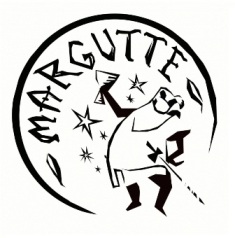SERKAN ENGİN
According to the school of imagist socialist poetry, poetry is written in poetic images, not in individual words. But what is poetic image and how can it be created?
The description of the “image,” according to the philosophy, is “The reflection of the objective reality on human mind” (Philosophy Dictionary by Orhan Hancerlioglu). In other words, we can say “night image” in philosophical meaning, but the word “night” can’t be an image alone in poetry, because the “poetic image” has a different meaning. When we say “night”, similar associations occur to everyone, but we establish the “poetic image” by “night + x” words, in other words, by a combination of “at least two words” used for the first time in a poem. That is how the “image” functions in poetry.
Let’s take an ordinary word in common usage, in other words, a word which is used collectively by everyone who speaks the same language, for example, “tree”. The word “tree” , which is a concrete word, is a “sign” according to Linguistics, which is a sub-branch of Semantics. Humans think in concepts and use these signs to express their thoughts. The objects, cases, facts and acts represented by these signs in reality are called “referents”. A sign must express the same referent for other humans to effect communication, which is the main function of the language. In other words, the impression/ image which occurs in the minds of every person who receives the word as written or audial is the sum total of the main properties of the sign. For example, when we take a concrete word such as “tree” and write or say “tree”, a zeppelin image or an elevator image doesn’t occur in any of the minds of the readers/ listeners. Likewise, when we take an abstract word like “night”, we reach for the same result. When we write or say “night”, the sum total of collective projections occurs in the minds of all readers/ listeners. In other words, when we write or say “night”, collective projections may arise related to various abstract concepts and concrete objects like death, silence, entertainment, street lamp, sleep, bar stool, burglar, loneliness, bed, sex, etc. But no projection about an abstract concept like “bribery” or a concrete object like “arrow” occurs in the mind of anyone who reads or hears the word “night”.
The “image” as discussed above is not the same as the“poetic image”, because the signs (words) in common usage form the “same” sum of the collective “images”.
Poetic image is established by correlating two words (signs) having a distinct semantic relation between themselves with an analogous relation, so when the reader/listener receives the poetic image, one or more referents occur in the mind of each individual, according to their “subjective perceptions”. This referent does not necessarily correspond to the essential object of the “creation” which originates in the mind of the poet, who is the author of the poetic image in terms of conception and imagination. So, no identical and fixed projection occurs toevery person.
Let’s give an example. We have two words: “night”, an abstract noun and “shirt”, a concrete nounll. We will establish a “poetic image” by correlating these two words through an analogous relation. That will be an abstract-concrete combination, but we can also create a poetic image using concrete-concrete, concrete-abstract, abstract-abstract, or abstract-concrete combinations of “at least two words” by correlating them in the same way.
Schematically:
night……………………………………………………………commonword
x + night = the shirt of the night………………..poetic image established by correlation of two words having a distant semantic relation using an analogous relation.
x + night + y= the shirt of the night was torn…..chaining poetic images
x + night + y + z = the shirt of the night was torn by Love…..the whole verse established by chaining poetic images.
Let’s divide the verse to its sub-units establishing the chaining impact:
1- The shirt of the night
2- The shirt of the night was torn
3- The shirt of the night was torn by Love
This poetic image is established using a noun + noun combination. Also we can create a poetic image using averb + noun combination.
Let’s give another example of averb + noun combination. We have two words:“street”, a noun, and “cry”, a verb.
cry……………………………………………commonword
cry + x= I cried to the street………..poetic image
cry + z + x = I cried my desires to the street……….. chaining poetic images
cry + y + z + x = I cried my purple desires to the street…… the whole verse established by chaining poetic images.
By the same author:
Imagist Socialist Poetry and Artistic Reality
They were my ancestors, poems
Cover photos by Bruna Bonino


